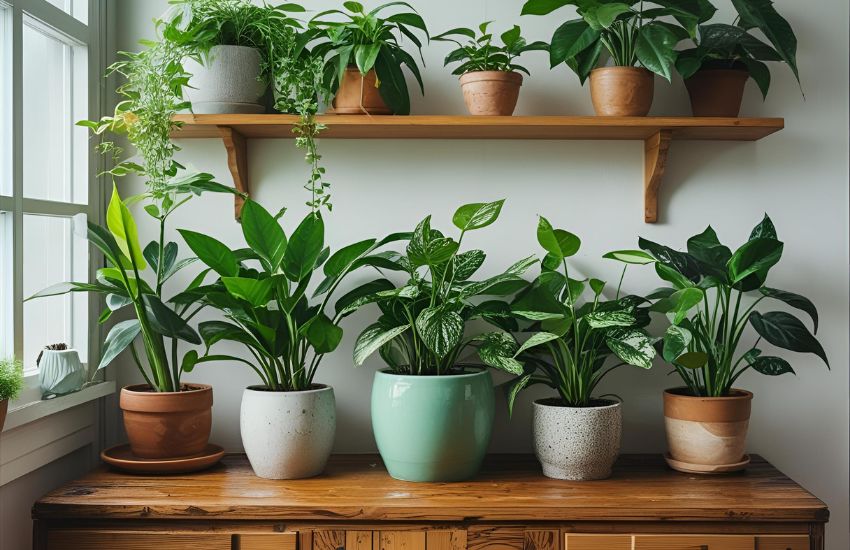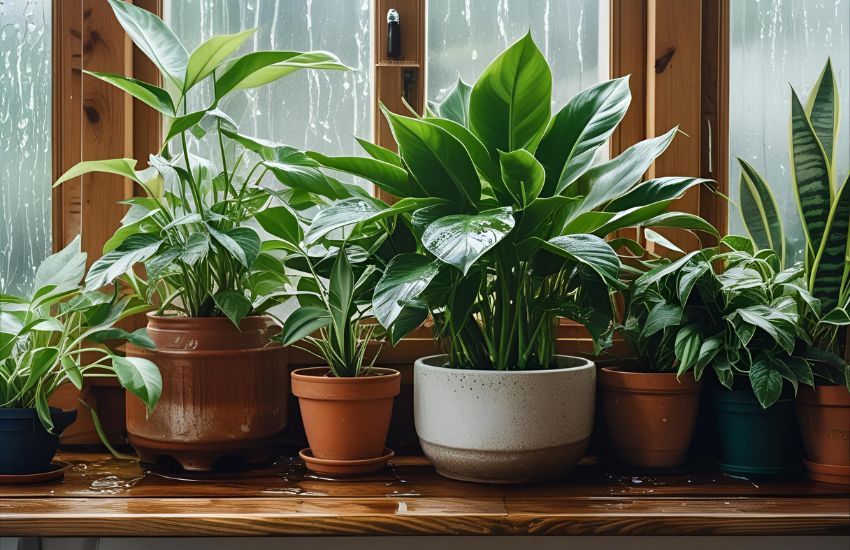When your beloved indoor plant starts drooping, turning pale, or developing mushy roots, the culprit is often overwatering. Too much water can suffocate the roots, block essential air pockets in the soil, and eventually cause root rot. An overwatered plant doesn’t just lose its beauty—it struggles to survive. Knowing how to act quickly can mean the difference between saving it and losing it entirely.
To revive an overwatered indoor plant, stop watering and ensure proper drainage. Check for root rot, trim damaged roots, and repot the plant in fresh potting mix with perlite. Allow soil to feel dry to the touch before watering to help prevent overwatering.
By understanding the signs of overwatering and the specific steps needed to address them, you can restore your plant’s strength. Sometimes you may need to repot the plant into fresh potting mix, trim away damaged roots, or adjust your watering schedule to give the roots a chance to breathe. Using perlite to improve drainage, ensuring the root ball isn’t sitting in excess water, and checking if the soil feels dry to the touch before watering are all essential parts of recovery.
In this guide, you will discover proven techniques to revive an overwatered indoor plant—from identifying symptoms to choosing the right soil mix and planter. You will also learn how to repot effectively, promote healthy roots, and help prevent future problems so your plants can thrive for years to come.
Understanding the Signs of Overwatering in Your Indoor Plant

Recognizing the signs of overwatering is essential for maintaining long-term plant health and avoiding the risk of root rot. When you’ve overwatered, your indoor plant will often display yellowing or browning leaves, wilted leaves, or even sudden leaf drop. These symptoms of overwatering can sometimes be mistaken for underwatering, but the difference lies in the moisture levels. A soil moisture meter can help you accurately assess whether the potting soil is too wet or if the soil is dry enough for the next watering. Always allow the soil to dry partially before watering plants again, as this will prevent overwatering and help your plants thrive.
In some cases, plants in shaded locations may be more prone to water retention since they take up enough water more slowly. If you notice yellowing leaves or that the surface of the soil remains wet for long periods, you may need to move the plant to a brighter area or even move the plant to a shady spot temporarily if it’s stressed. For an already overwatered plant, gently lift the plant out of the pot or lift the plant out of its pot to inspect the roots and the soil around the root ball. If the soil around the roots is soggy, you may need to cut away damaged leaves and stems, then air dry the soil around them to help to dry out soil and encourage recovery.
When soil dries too slowly, repotting into a mix of free-draining compost or a plant in a mix with better soil can improve aeration. Choose a pot with drainage holes to allow excess water to escape from the bottom of the pot. This simple step will help your plants and keep your plants healthy, ensuring they can take up enough water without being waterlogged. Sometimes, giving less water is the best plant care decision you can make. If necessary, plant out of the pot and replant in fresh potting soil, ensuring the new container supports proper drainage. When you water to keep your plant hydrated, aim to water only when the soil is dry on the surface and the soil dries deeper down, giving the plant time to dry. This balanced approach will help your plants recover from overwatering and maintain their resilience.
Proven Indoor Plant Tips to Treat Root Rot and Safely Repot the Plant

Identify and Assess Root Damage
Root rot is one of the most common and damaging issues for indoor plants, often caused by excessive moisture in the soil around the root ball. When inspecting your plant, gently slide it from the sides of the pot and check the roots. Healthy roots will be white, while rotted ones are often brown or black in color and mushy to the touch. Plants affected by root rot may struggle to move water efficiently through their systems, leading to wilting leaves or poor growth. Acting quickly is essential to prevent further damage.
Prune and Prepare for Recovery
Once you have identified the damaged roots, use clean, sharp scissors to trim away the affected portions. At this stage, it is best to remove any flowers or fruits so the plant can focus its energy on root recovery rather than reproduction. Doing this has saved many of my plants from complete decline. If the plant’s soil is still overly wet, remember that drying out due to evaporation can be slow indoors, so manual intervention is often necessary.
Repot in Fresh, Well-Draining Medium
When repotting, ensure the new container supports healthy growth. Always make sure the pot is draining properly to avoid future moisture build-up. Use a fresh, airy potting mix designed for indoor plants to promote aeration and prevent waterlogging. Gently place the plant back, spreading the soil evenly around the root ball, and avoid compacting it too much so air and water can circulate freely.
Maintain a Healthy Environment Post-Repot
After repotting, water lightly and allow the plant to settle. Position it in a spot with appropriate light and temperature for its species, and keep plants in a stable environment without sudden changes. Over the next few weeks, monitor the roots and foliage closely, ensuring that the plant is not overwatered and is adjusting well to its new home. With proper care and attention, your plant will recover and thrive.
Conclusion
Reviving an overwatered indoor plant may seem challenging, but with patience, observation, and the right techniques, you can restore both its beauty and vitality. By learning to identify the early signs of overwatering, improving drainage, and addressing issues like root rot promptly, you give your plants the best chance to thrive. Remember, healthy roots are the foundation of lasting plant health, and small adjustments—such as allowing the soil to dry before watering—can make all the difference.
Now is the perfect time to apply these proven methods to your own plant care routine. Inspect your plants today, check their moisture levels, and ensure they have the conditions they need to flourish. Take the first step toward creating a thriving, vibrant indoor garden—start giving your plants the balanced care they deserve.
